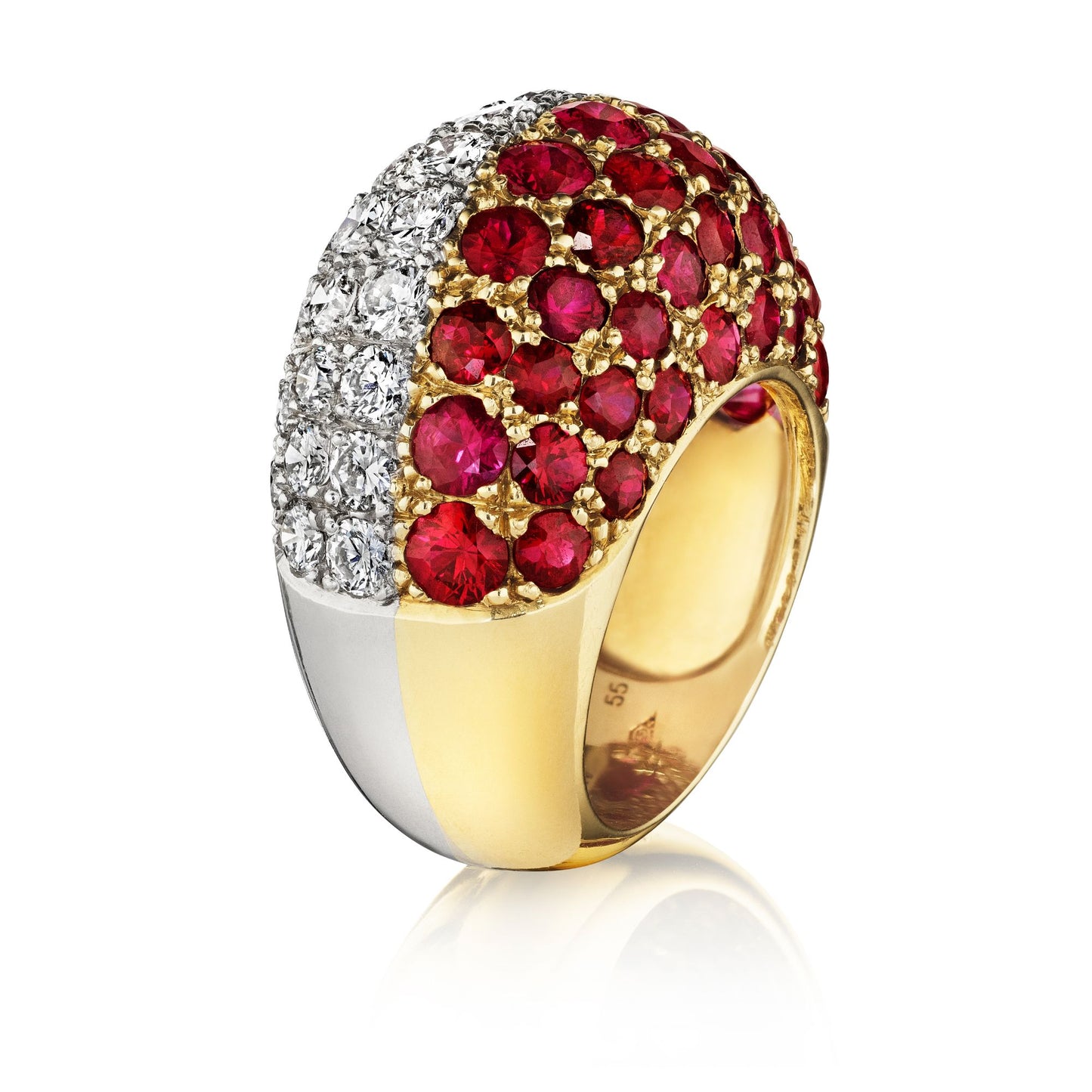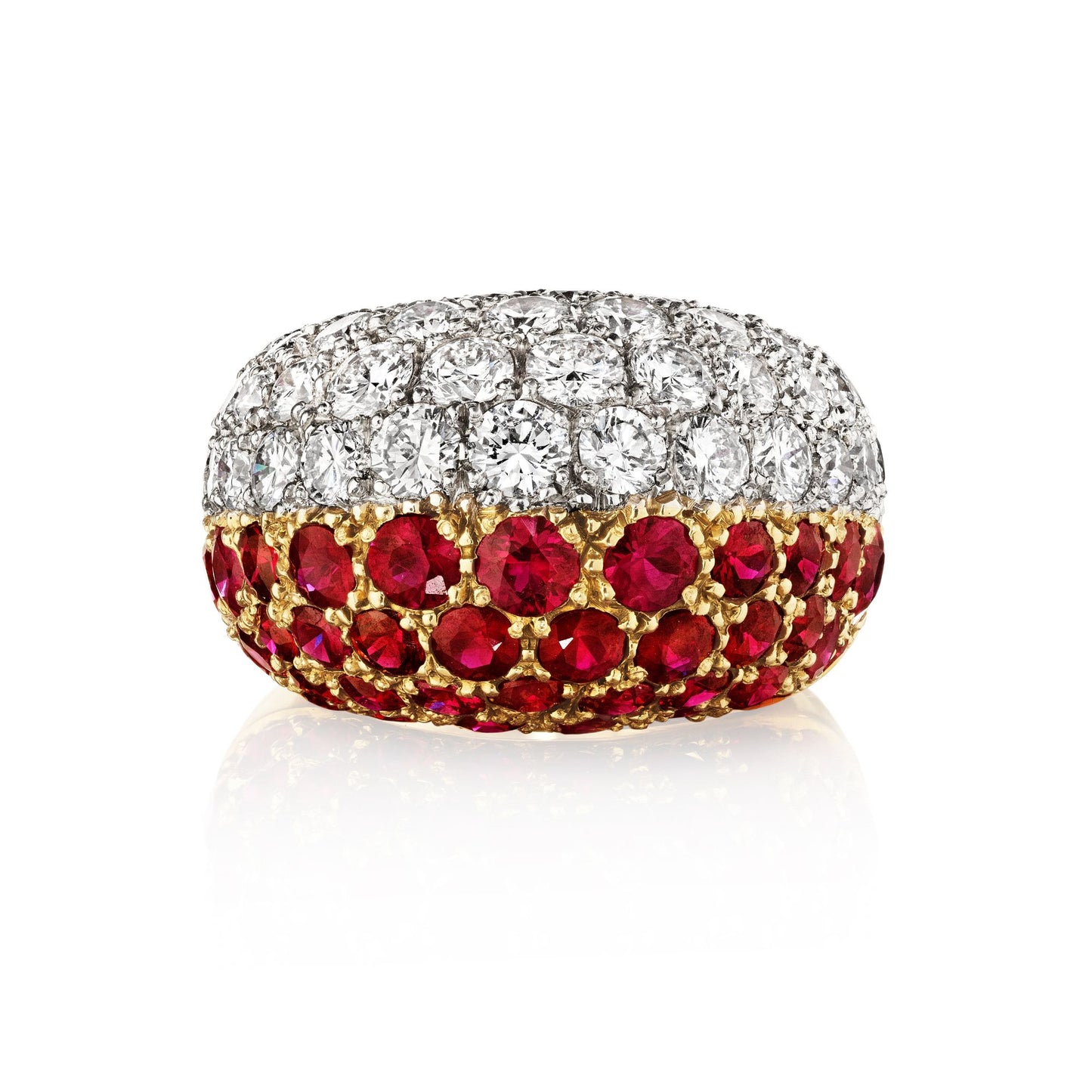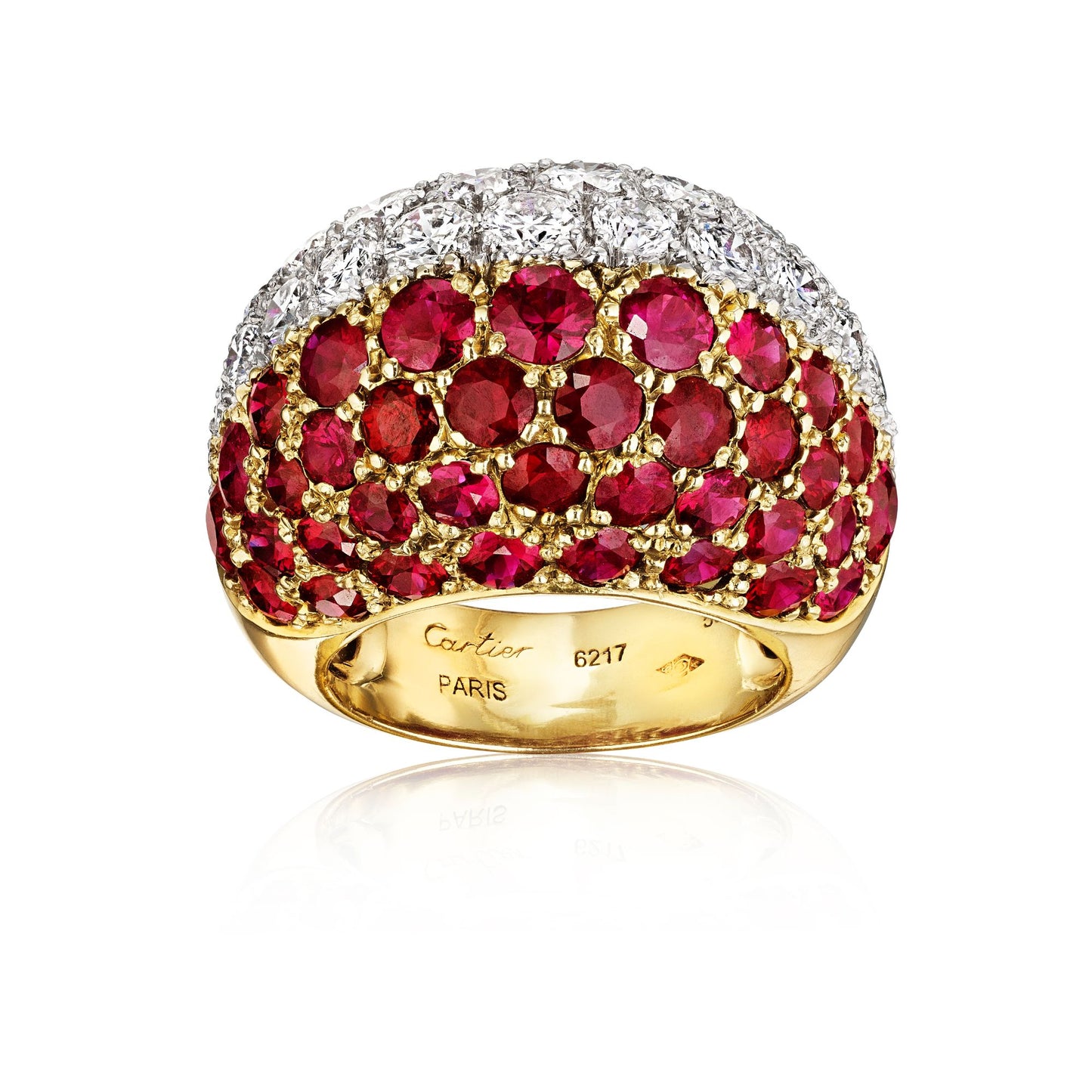Bombé Ruby and Diamond Ring by Cartier, Paris, circa 1970
Bombé Ruby and Diamond Ring by Cartier, Paris, circa 1970
A ring of bombé form composed of pavé-set diamonds and rubies; mounted in platinum and yellow gold, with French assay marks
- Diamonds, total weighing approximately 4.5 carats
- Rubies, total weighing approximately 6 carats
- Marks: Cartier Paris and numbered
- Measurements: 1 inch x 1 1/8 x 7/16 inches
- Ring size: 6 3/4
Additional cataloguing
Literature
Coleno, Nadine. Amazing Cartier: Jewelry Design since 1937. Paris: Flammarion, 2009, p. 114.
Biography
Cartier was founded in Paris in 1847 by Louis-François Cartier. His three grandsons, Louis, Pierre, and Jacques, built the house into a famous international jewelry empire serving royalty, Hollywood stars, and socialites. Cartier has created some of the most important jewelry and objects of art of the twentieth century with many iconic designs such as mystery clocks, Tutti Frutti jewelry and the Panthère line. In 1983, The Cartier Collection was established with the objective of acquiring important pieces that trace the firm’s artistic evolution. Today, Cartier has 200 stores in 125 countries.
Significance
In 1933 Jeanne Toussaint, a visionary with superb taste, took over as director of the luxury jewelry department at Cartier. She moved the company away from the structured jewels of the Art Deco and created colorful, oversized pieces that brought playfulness to the dark times of World War II. Toussaint remained deeply connected to the design roots of the company—after all she was the inspiration for the panthère—and looked back at previous forms, reviving Chimeras and panthers with modern materials and design. She enjoyed oversized cocktail rings, and an early version of a half-and-half ring in diamonds and rubies appeared in Vogue in 1937 and in Femina in 1947. It was again featured on the cover of Vogue in 1956 along with a set of Cartier jewelry. Toussaint’s exploration of unusual rings was iconic and four of her oversized ring designs were the central feature of a Harper’s Bazaar cover in 1947. The description read “First view of fine rings from Paris . . . New altitudinous dimension for a ring and the hand that wears it.”
By the 1950s, cocktail rings had become bold, colorful, and oversized—they were meant to draw attention to the hand as it rested on the stem of a fluted glass or held a beaded purse against a biased cut silk dress. The idea of a bold statement ring had become popular in the 1920s, when women seized social freedoms and began to work outside the home, take up sports, and socialize at nightclubs. Toussaint expanded on the idea of the cocktail ring, creating half-and-half gem-set pieces first in diamond and ruby, then in diamond and yellow-diamond combination. In later decades, similar rings were made with diamonds and carved coral or lapis lazuli. This style of ring became an iconic Cartier design for decades.
In a subtle and wonderful design move, the coolness of the colorless diamonds is heightened by white gold, while the warmth of the rubies is accented by yellow gold. This iconic ring, celebrated by top fashion magazines would be a wearable and coveted addition to any collection.















